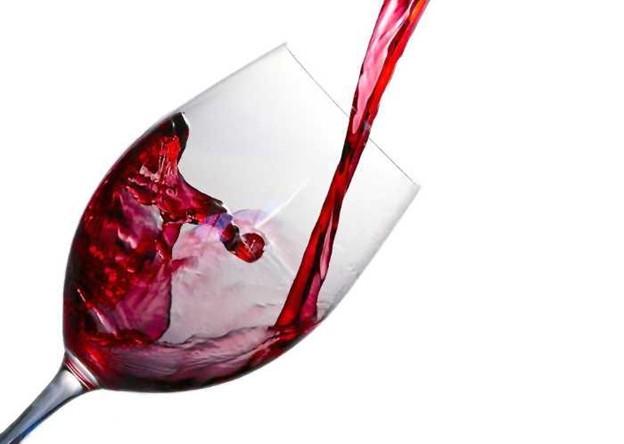You are not alone if you often find yourself sipping your wine from a fancy red wine glass. Generally speaking, there is something special about this type of holder for beverages. It makes them the perfect with any kind of flavor!
The typical round shape makes drinking wine easy and enjoyable. While also presenting an elegant look on tables when placed prominently near other high-end pieces such as silverware sets iced coffee mugs etc.

But have you ever thought about why it’s designed that way? Why is it necessary to have a stemless wine glass or even white wine glasses? Is it simply to make it appear posh and sophisticated?

Brief History Of The Wine Glass Stem
Wine glasses didn’t even have stems until the early 17th century.
One of the earliest references to wine glasses comes from the Roman poet Martial. He wrote about “hollow silver cups” in the first century AD. These cups were likely used for drinking wine, but they were more like modern-day shot glasses than anything else.
It wasn’t until the Middle Ages that wine glasses started to take on a more familiar shape. The first wine glasses were bowl-shaped and didn’t have stems. They were typically made of glass or pewter, and they were often quite large. Some could hold a full bottle of wine!
It wasn’t until the early 17th century that stemware became popular. The earliest stemware was made out of baluster glass. Early wine glasses were bowl-shaped with a wide rim, and they didn’t have stems.
This design made it difficult to drink wine without spilling it. In the early 17th century, vintners began making their glasses with stems. The addition of the stem allowed wine drinkers to hold the glass by the base and still focus on drinking from the bowl.

Why Do Wine Glasses Have Stems?
It’s a longstanding question that has puzzled wine enthusiasts and casual drinkers alike: why do wine glasses have stems?
When you hold a glass with both hands, the stem mustn’t be in contact with either of them. The bowl on its own provides enough surface area for grip so your fingers don’t get too hot and avoid burning themselves while holding onto this delicate piece
When you touch the bowl rather than the stem, heat from your hands radiates and heats the glass. This can elevate the wine’s temperature. The flavor of the wine may be affected by this type of body heat, and the alcohol taste may overshadow the other flavors.
8 Reasons Why Do Wine Glasses Have Stems?
Wine glasses have stems for a variety of reasons.
- The shape and size of your typical red or white wine glass are designed to enhance its flavor by directing the flow of wine to specific parts of the mouth.
- Stems prevent heat from your hand from warming the wine.
- To help you avoid smudging the glasses with fingerprints
- They also make it easier to hold the glass by the stem without obscuring your view of the wine.
- A stemless glass makes swirling wine in the glass easier
- Stems help to show off the color of the wine. They can be used as a guide when swirling the wine in the glass.
- Wine glasses with stems just look more elegant!
- To make it easier to hold the glass by the stem without dropping it.
One of the most important factors in enjoying wine is temperature. White wines are best served chilled, while red wines are best served at room temperature. However, serving temperatures are not always ideal, and sometimes it is necessary to make adjustments. This is where wine stems come in handy.
By holding the stem of the glass, the drinker’s hands are kept cool and outside of the temperature range for wine. Additionally, by chilling the stem, or even keeping it at room temperature and not in direct sunlight, a wine glass can also help to ensure that the wine is served at a perfect drinking temperature.
Are There Stemless Glasses?
These glasses are called “stemless” because they do not have a stem to support the bowl-like part of their design.
They look like an upside-down shallow glass with something thick and clear in it. This kind of reminds me of dessert drinking utensils!
This stemless glassware is not your ordinary cup or saucer. They have the bowl part of a traditional glass attached to them.
A stemless glass is a drinking glass that does not have a stem. Stemless glasses are generally shorter and wider than stemmed glasses, making them easier to drink from and less likely to tip over. They are also more durable and less likely to break.
Stemless glasses are ideal for casual settings such as picnics, backyard barbecues, parties, and other outdoor gatherings. They are often used for serving wine, beer, cocktails, or other types of beverages.

Advantages Of Choosing Stemless Glasses
Some advantages to choosing stemless glasses include:
- They tend to be more durable than stemmed glasses, as they do not have a fragile stem that may break off during use.
- They are less likely to tip over, making them ideal for use in casual settings or outdoors where there is a risk of tipping.
- They are easier to drink from and hold, as they do not have a stem that must be held to drink.
- They take up less space when stored, making them an ideal choice for smaller kitchens with limited cabinet space.
Conclusion
Regardless of why wine glasses have stems, it’s clear that this design element has become one of the defining features of modern wine culture.
Today, there are hundreds of different styles of wine glasses available, and each one is designed to bring out the best in a specific type of wine.
So next time you’re enjoying a glass of your favorite vino weather using a slender stem or the long stemmed wine glasses, take a moment to appreciate the stemware that makes it all possible!

